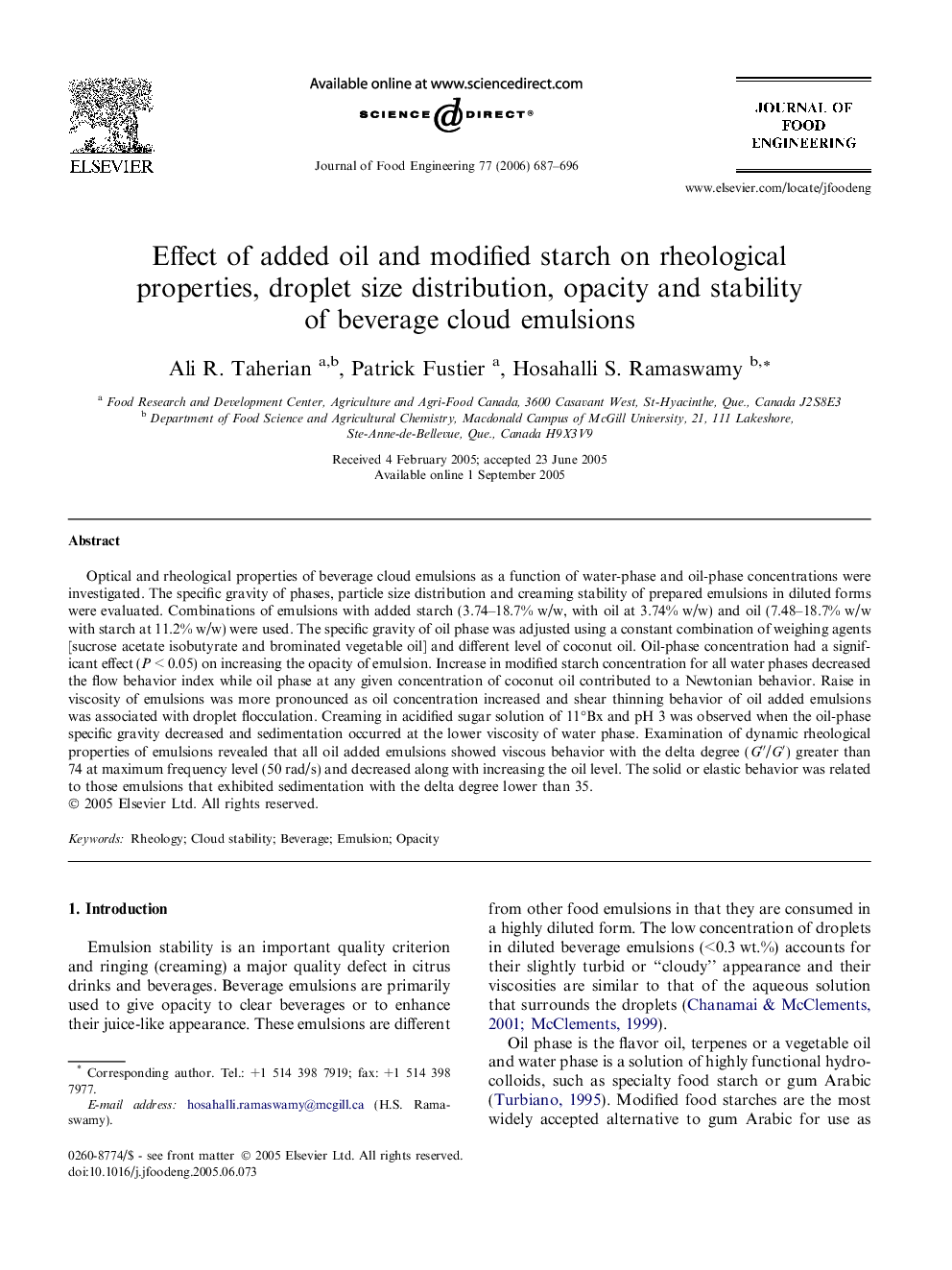| Article ID | Journal | Published Year | Pages | File Type |
|---|---|---|---|---|
| 226286 | Journal of Food Engineering | 2006 | 10 Pages |
Optical and rheological properties of beverage cloud emulsions as a function of water-phase and oil-phase concentrations were investigated. The specific gravity of phases, particle size distribution and creaming stability of prepared emulsions in diluted forms were evaluated. Combinations of emulsions with added starch (3.74–18.7% w/w, with oil at 3.74% w/w) and oil (7.48–18.7% w/w with starch at 11.2% w/w) were used. The specific gravity of oil phase was adjusted using a constant combination of weighing agents [sucrose acetate isobutyrate and brominated vegetable oil] and different level of coconut oil. Oil-phase concentration had a significant effect (P < 0.05) on increasing the opacity of emulsion. Increase in modified starch concentration for all water phases decreased the flow behavior index while oil phase at any given concentration of coconut oil contributed to a Newtonian behavior. Raise in viscosity of emulsions was more pronounced as oil concentration increased and shear thinning behavior of oil added emulsions was associated with droplet flocculation. Creaming in acidified sugar solution of 11°Bx and pH 3 was observed when the oil-phase specific gravity decreased and sedimentation occurred at the lower viscosity of water phase. Examination of dynamic rheological properties of emulsions revealed that all oil added emulsions showed viscous behavior with the delta degree (G″/G′) greater than 74 at maximum frequency level (50 rad/s) and decreased along with increasing the oil level. The solid or elastic behavior was related to those emulsions that exhibited sedimentation with the delta degree lower than 35.
